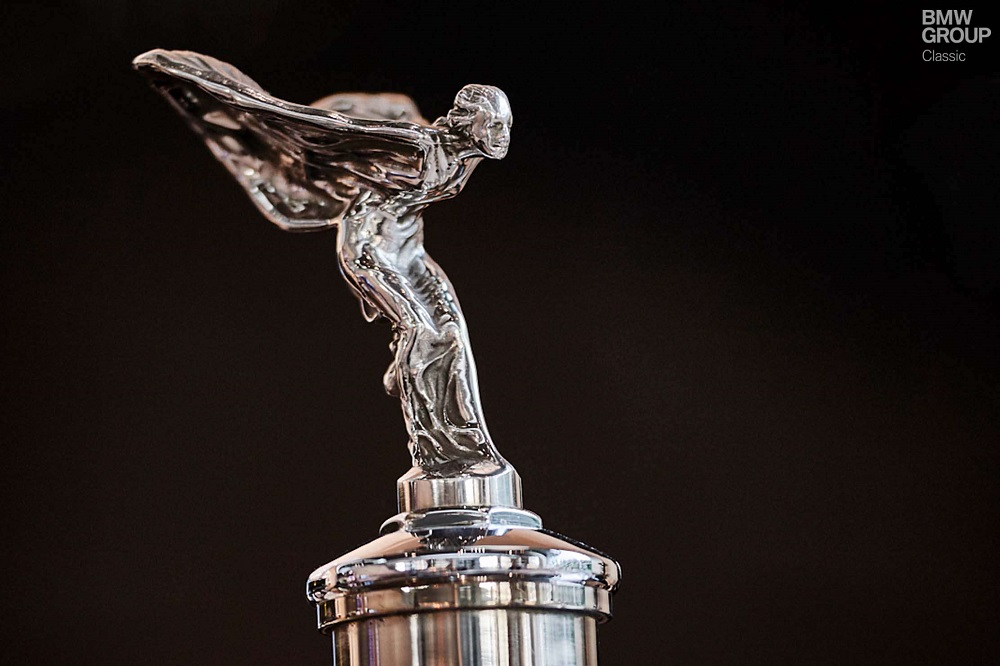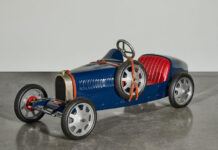In the early 1900s, as the motor car began to blaze a trail into the 20th century, it usually did so behind the proud prow of its radiator. At the radiator’s peak was a cap which would have to be opened frequently to top up the water level. It did not take long for a relentlessly inventive accessories industry to think up all kinds of radiator figurines with which owners could individualise their vehicles. There were animals, devils, mythical characters and, of course, archers, spear throwers and torchbearers. Some were fine specimens, but many others were extremely childish or even ridiculous.

Claude Johnson and Charles Rolls, both directors of Rolls-Royce Ltd. (est. 1906) took exception to this new trend, which they saw as increasingly disfiguring their vehicles. It was an unwelcome development for what were already “the best cars in the world”. So why not occupy the box seat atop the radiator with their own creation? Something that would be more attractive, refined and artistic than all those horrors from the accessory manufacturers. It was at this point that Charles Sykes entered the scene – a young sculptor and graphic artist who worked on The Car Illustrated magazine and whose boss, John Scott Montagu, was a friend of Johnson and Rolls. It is said that his design was inspired by Eleanor Thornton, Montagu’s assistant, who had already appeared as a cover girl for her employer’s title several times. However, it is still unclear as to whether she really was the muse for the design. As Charles Sykes’ daughter Josephine once remarked: “She was a lovely person. It is an interesting story and if it makes you happy, let the myth prevail.”
Whatever the source of his inspiration, Sykes registered his design on 6 February 1911, but only Johnson and Royce were there to see it. Charles Rolls had died in a plane crash in 1910, becoming the very first British aviation fatality in the process. And Eleanor, too, met a tragic end, succumbing when the ship taking her to India was torpedoed in 1915.
An intricate manufacturing process.
A special investment casting process, also known as “lost wax” casting, is used to produce the Spirit of Ecstasy figurines. It begins with a 3D computer model of the original which serves as the basis for the creation of a die whose smallest details are then refinished by specialists working with extremely fine-bladed tools. The die, in turn, is used to produce a perfect wax model of the figurine to serve as a positive mould which is then coated in ceramic. Once this coating has dried, the wax inside is melted away and replaced by molten stainless steel at a temperature of 1,600 °C. But this is not the end of the process by any means. It is now time for the Finishing department to take over, first by performing a special process called peening. This is a very delicate blasting process using tiny stainless steel spheres – none of which has a diameter greater than 0.04 millimetres – to remove all the casting residues. The final stage of this painstaking manufacturing process is then performed by the polishers, who devote their considerable skill and a great deal of time to producing the special mirror finish that gives every “Emily” a unique aura of exclusivity.
Also extremely popular among thieves and souvenir-hunters, the figurine has long concealed a protection system which causes it to disappear inside the imposing radiator grille when the car is parked. Its “resurrection” each time the driver embarks on a new journey only adds to the sense of occasion associated with travelling in a Rolls-Royce. Moreover, it serves as a regular reminder of how a fad from the early days of motoring gave rise to arguably the most attractive and famous radiator figurine of all time.
Report by bmwgroup-classic.com










